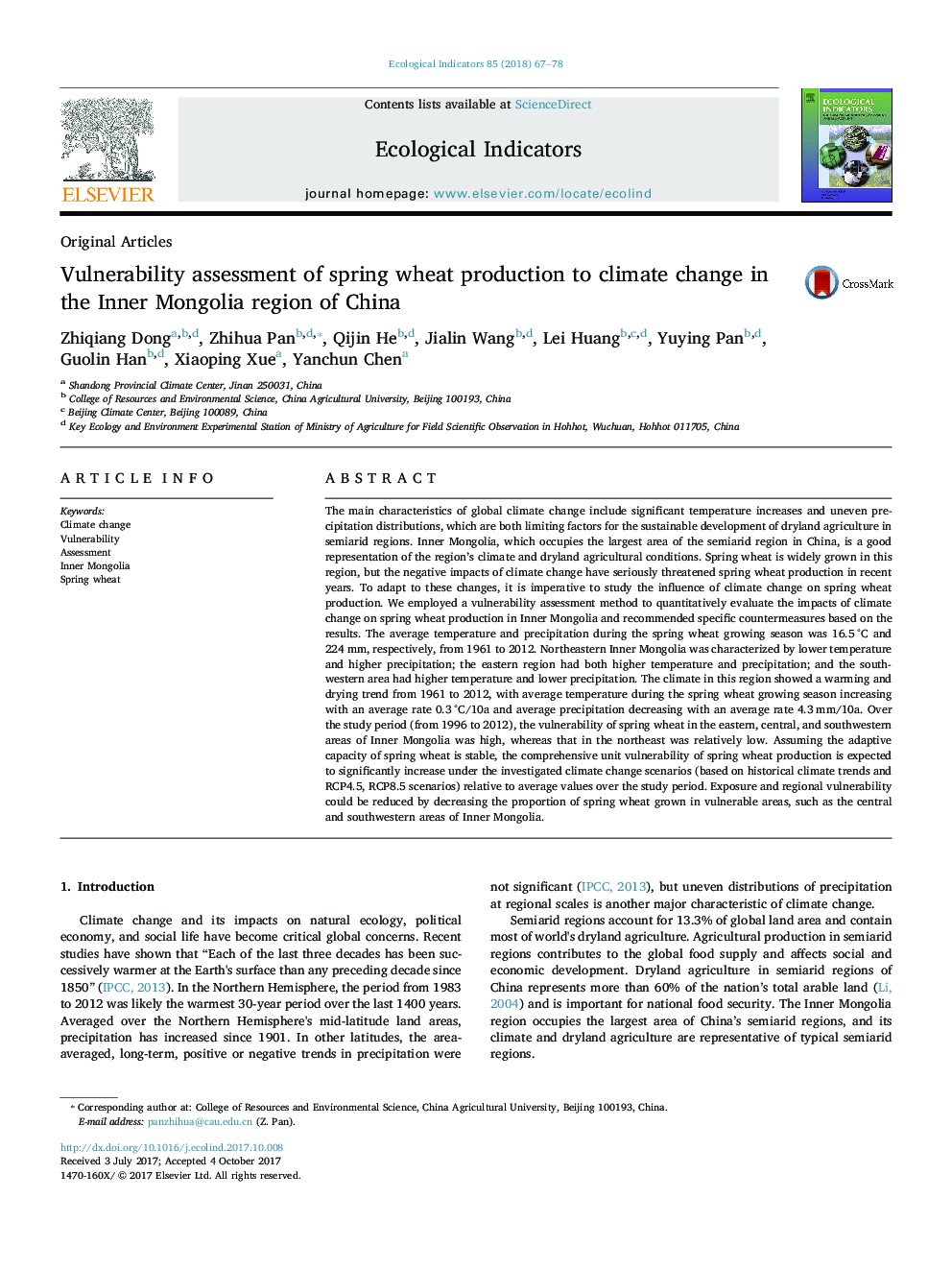| کد مقاله | کد نشریه | سال انتشار | مقاله انگلیسی | نسخه تمام متن |
|---|---|---|---|---|
| 5741293 | 1617117 | 2018 | 12 صفحه PDF | دانلود رایگان |
- The climate change during the spring wheat growing season in Inner Mongolia region from 1961 to 2012 presented a warming and drying trend.
- A quantitative assessment method was employed to evaluate the impacts of climate change on spring wheat production in Inner Mongolia.
- Spring wheat production is more vulnerable to changes in temperature and the combined effects of temperature-precipitation changes.
- The comprehensive unit vulnerability of spring wheat production is expected to increase significantly in future climate scenarios.
The main characteristics of global climate change include significant temperature increases and uneven precipitation distributions, which are both limiting factors for the sustainable development of dryland agriculture in semiarid regions. Inner Mongolia, which occupies the largest area of the semiarid region in China, is a good representation of the region's climate and dryland agricultural conditions. Spring wheat is widely grown in this region, but the negative impacts of climate change have seriously threatened spring wheat production in recent years. To adapt to these changes, it is imperative to study the influence of climate change on spring wheat production. We employed a vulnerability assessment method to quantitatively evaluate the impacts of climate change on spring wheat production in Inner Mongolia and recommended specific countermeasures based on the results. The average temperature and precipitation during the spring wheat growing season was 16.5 °C and 224 mm, respectively, from 1961 to 2012. Northeastern Inner Mongolia was characterized by lower temperature and higher precipitation; the eastern region had both higher temperature and precipitation; and the southwestern area had higher temperature and lower precipitation. The climate in this region showed a warming and drying trend from 1961 to 2012, with average temperature during the spring wheat growing season increasing with an average rate 0.3 °C/10a and average precipitation decreasing with an average rate 4.3 mm/10a. Over the study period (from 1996 to 2012), the vulnerability of spring wheat in the eastern, central, and southwestern areas of Inner Mongolia was high, whereas that in the northeast was relatively low. Assuming the adaptive capacity of spring wheat is stable, the comprehensive unit vulnerability of spring wheat production is expected to significantly increase under the investigated climate change scenarios (based on historical climate trends and RCP4.5, RCP8.5 scenarios) relative to average values over the study period. Exposure and regional vulnerability could be reduced by decreasing the proportion of spring wheat grown in vulnerable areas, such as the central and southwestern areas of Inner Mongolia.
Journal: Ecological Indicators - Volume 85, February 2018, Pages 67-78
